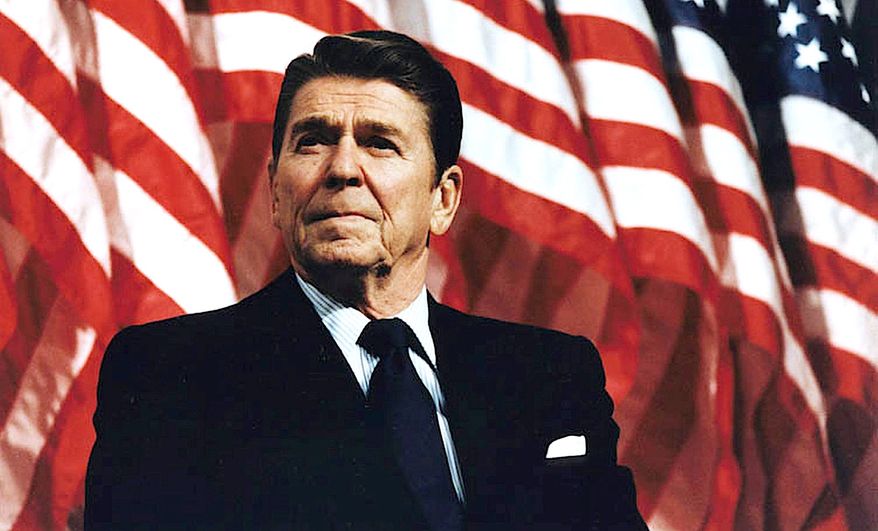A HALLMARK OF SUCCESS IS HAVING A VISION AND THEN ACTUALLY DOING IT
No one has been or will be the perfect president, but a number have more than met the needs of their times — the most recent being Ronald Reagan. A hallmark of successful presidents is having a vision of what they intend to do and then actually doing it.
When Reagan was elected president, the opposition Democrats and many in the press portrayed him as a not-particularly-bright, B-grade actor, who would probably get the U.S. into a nuclear war and make a bad economy worse. Over time, most came to realize that Reagan was a very smart fellow whom they had greatly underestimated. He understood that building a staff of very smart, experienced people would accrue to his and the nation’s benefit.
When elected, the nation was deep in the Cold War, living under the cloud of nuclear annihilation, and the economy was stagnant and suffering from a record high rate of inflation. By the time he left office, eight years later, the Soviet Union and other communist countries were in various stages of political and economic meltdown. The curse of inflation had largely been eliminated, and most people were enjoying the greatest prosperity they had ever known — a period known as “the seven fat years.”
Reagan was an extraordinary communicator, with a pitch-perfect sense of timing, and probably the best speech maker the country ever had.
George Washington set the standard for excellence as America’s first president. He was highly intelligent with an interest in many different subjects, and even though he was largely self-taught, he gained considerable expertise in geography, geology and other sciences, particularly those related to agriculture.
He was well-schooled in political philosophy and the enlightenment in part due to his mentoring by Benjamin Franklin and George Mason, and his involvement with the other American Founders, most of whom had more formal education than he. As a military commander, Washington learned much from his own mistakes, as well as from professionals from Europe that he had recruited. He was a natural-born leader, with exceptionally good judgment, and he had the wisdom to understand that he was establishing precedents for future presidents, which have met the test of time.
James K. Polk was president from 1845 to 1849, yet most Americans are almost totally unaware of him and what he accomplished. At the time, he was the youngest elected president, but promised to serve only one term, and then died three months after his single term.
His great vision was to fulfill the dream of “manifest destiny” (the belief that the U.S. was ordained by God to stretch from the Atlantic to the Pacific — from “sea to shining sea”). The problem was that the Northwest (Oregon, Washington and Idaho) was controlled by the British, Texas was an independent republic, and what was to become California, Nevada, Arizona, New Mexico and Colorado was owned by Mexico. Polk quickly managed for Texas to give up its independence in exchange for becoming a U.S. state.
The Polk administration successfully negotiated with Britain so that the Northwest territories south of the 49th parallel were acquired by the U.S. Finally, the Polk Administration waged a successful war with Mexico, which resulted in Mexico giving the U.S. the American Southwest. Polk was very talented and the only president who also served as speaker of the House of Representatives.
But his greatest accomplishment has largely been ignored, and his reputation forever damaged because he was the last president to own slaves during his time in office (despite his promise to free them upon both his and his wife’s deaths).
It is a remarkable fact that only three presidents arranged for almost all of the land of the lower 48 states — creating the map of the U.S. as we now know it. George Washington, by winning the Revolutionary War, gave the U.S. the land between the Atlantic and the Mississippi River. Thomas Jefferson, through the Louisiana Purchase, provided the middle third of the country. Polk, through negotiation and war, provided the huge American West.
By the time Reagan took office, the physical landscape of America had long been set, but the country (much like today) had lost much of its common vision of why it was exceptional. Reagan, as only he could, woke his fellow Americans to the fact that they were still that “shining city on the hill.” As Martin and Annelise Anderson explain in their book, “Reagan’s Secret War,” Reagan was a writer. “He wrote short stories, articles, radio commentaries (685 essays on domestic and foreign policy in his own hand), speeches, letters, two autobiographies, and, during his years in the White House, a personal diary.”
In 1983, Reagan said in private to his pollster, Richard Wirthlin: “I want to be remembered as the president of the United States who brought a sense and reality of peace and security. I want to eliminate that awful fear that each of us feels sometimes when we get up in the morning that the world could be destroyed through a nuclear holocaust.” He not only did that, but left us with record prosperity, and endlessly entertained us with his marvelous good-natured wit and humor. It doesn’t get any better than that!
• Richard W. Rahn is chairman of the Institute for Global Economic Growth and MCon LLC.
https://www.washingtontimes.com/news/2022/may/16/washington-reagan-and-polk-the-ideal-us-president/
© Copyright 2022 The Washington Times, LLC.
